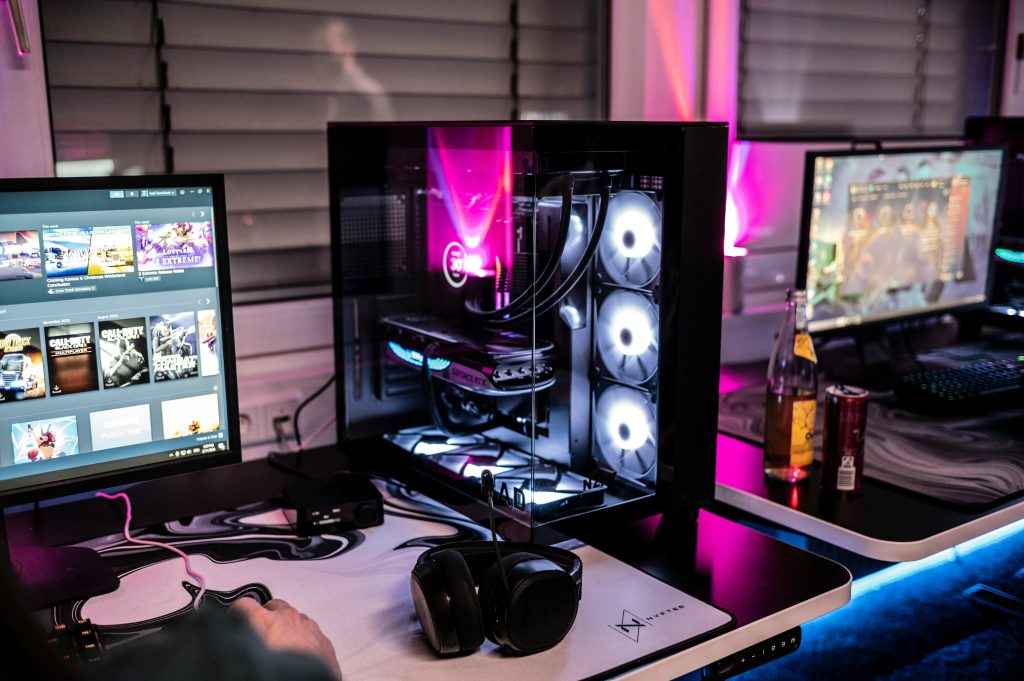When it comes to building or upgrading your gaming rig, one of the most important yet often overlooked components is the PC casing. While much attention is given to processors, graphics cards, and memory, the case serves a crucial role in ensuring your system runs smoothly and looks great. But how do you pick the right one for your needs?
In this guide, we’ll take a look at key factors to consider when selecting a gaming PC casing, from airflow to aesthetics, so you can make an informed decision.
1. Airflow and Cooling
One of the primary functions of a PC case is to keep your components cool. Proper airflow is essential for maintaining the health and performance of your hardware. Without it, components like the CPU and GPU can overheat, causing throttling or even permanent damage.
Look for cases with:
- Mesh panels: These allow for better airflow and cooling performance.
- Fan mounts: Ensure the case supports multiple fan placements, allowing for optimal airflow direction.
- Pre-installed fans: Many modern cases come with fans installed, which can save you the hassle of picking and installing them yourself.
Good airflow doesn’t just keep temperatures down, but it can also improve the overall longevity of your system.
2. Size and Form Factor
The size of your case depends largely on the components you’re using and how much room you need. There are a few common form factors:
- Full tower: Offers maximum space for components, including extra-large GPUs, multiple storage drives, and custom cooling solutions.
- Mid tower: A popular choice for those who want a balance between size and functionality. It’s spacious enough for most builds, including high-end GPUs and cooling solutions.
- Mini tower or ITX cases: These are compact options designed for smaller builds, ideal for those with limited space or who prefer portability.
Before choosing a case, double-check the dimensions of your components to ensure they’ll fit. For example, if you’re using a large graphics card, make sure the case is wide enough to accommodate it.
3. Cable Management
A well-organized system not only looks cleaner but also improves airflow, which is crucial for maintaining temperature levels. Look for cases with:
- Cable routing channels: These help you tuck cables behind the motherboard tray or around the edges, keeping them out of the airflow path.
- Cable tie points: Many cases come with hooks to tie cables and keep them neat.
- Tempered glass side panels: While not a necessity, a glass side panel can showcase your build’s interior. If you choose a case with this feature, neat cable management becomes even more important, as visible cables can detract from the overall look.
4. Build Quality and Materials
The materials used in the construction of a case can affect both its durability and weight. Common materials include:
- Steel: A standard for budget and mid-range cases, steel is strong and relatively affordable.
- Aluminum: Lighter and more premium, aluminum cases are often more expensive but offer a more refined feel.
- Tempered glass: Many cases feature tempered glass side panels for a sleek and modern look. It’s more fragile than regular acrylic but offers better scratch resistance.
When choosing a case, think about your priorities. If you need something lightweight and sturdy, steel might be the way to go. If aesthetics are important to you, tempered glass and aluminum could be worth the investment.
5. Aesthetic Features
While performance is critical, the way your case looks can also add a personal touch to your setup. Many PC cases come with customizable elements like:
- RGB lighting: Lighting can dramatically change the look of your system. Some cases come with built-in RGB lights, while others allow you to install your own lighting strips.
- Design: Cases now come in various designs, from minimalist, sleek boxes to more elaborate, industrial-looking styles. Choose one that matches your personal style or the overall aesthetic of your room.
- Side panels: Some cases feature transparent panels to give you a clear view of your internal components. If you’ve invested in high-quality hardware, this can be an opportunity to show it off.
6. Expansion and Future Proofing
As you build or upgrade your system, you may want to add additional components in the future. Whether that means installing extra drives, adding more cooling, or upgrading your graphics card, ensure your case has room to grow. Look for:
- Expansions: Even if you don’t need them right now, extra PCIe can come in handy down the line.
- Drive bays: If you plan to add more storage later, check that the case has space for additional hard drives or solid-state drives (SSDs).
- Clearances: Be mindful of the clearance for larger components. A spacious case gives you more room to work with, making future upgrades easier.
7. Price vs. Features
When choosing a PC casing, there’s a wide range of prices depending on the features, materials, and brand. However, you don’t always need to spend a fortune to get a high-quality case.
Entry-level cases are usually made from steel or plastic and may offer fewer features like limited cable management or fan mounts. However, they still provide solid performance and can be a great option if you’re on a budget.
On the other hand, mid-range and premium cases may come with extra features like tempered glass panels, additional fans, or custom cooling support. But keep in mind, these cases are often more expensive due to the added design, materials, and features.
Ultimately, it’s important to balance your budget with the features you need.
Conclusion
Selecting the right PC casing is about finding the right balance between functionality, cooling, and design. The case is the foundation of your build and ensures that all your components fit together neatly while keeping everything running efficiently. Whether you prioritize airflow, size, or aesthetic appeal, there’s a wide variety of cases available to suit any need or budget.
Take your time to consider your options and choose a case that will support your system now and in the future, while matching your personal preferences. A good casing not only enhances performance but also gives your rig a unique and polished look. Happy building!

